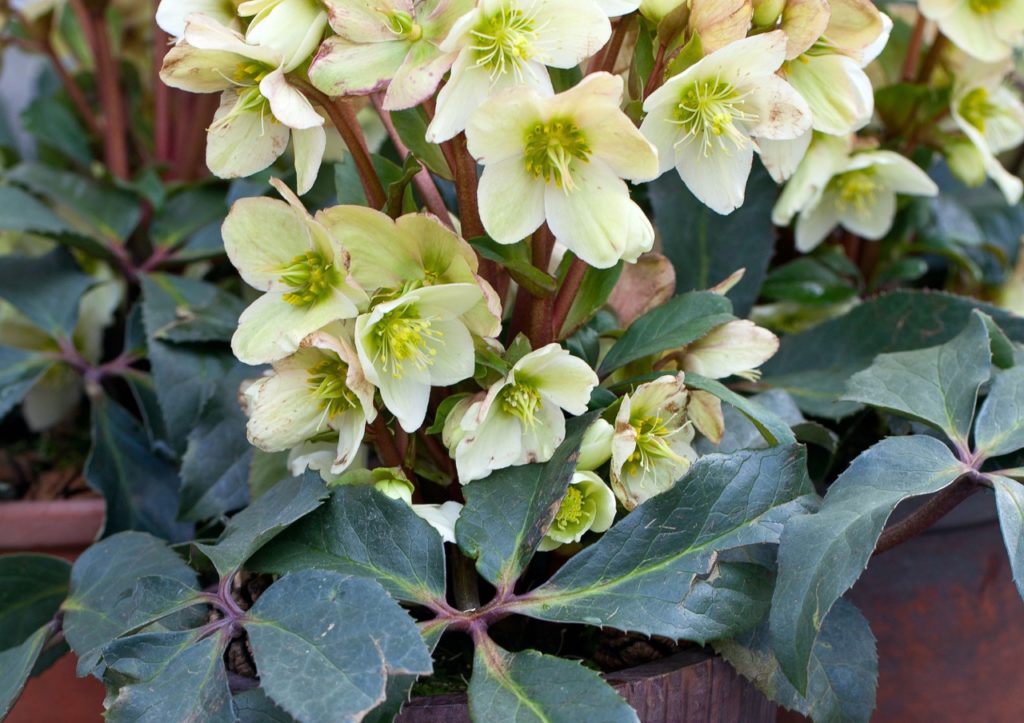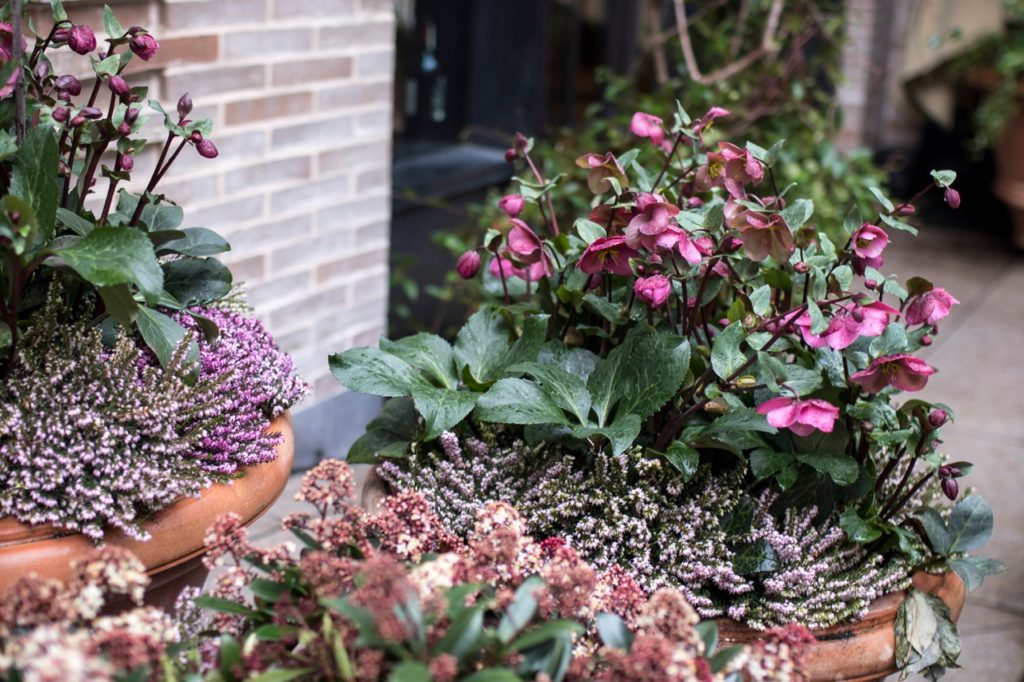They Do Better In The Ground, But Hellebores Can Also Be Grown In Pots Long Term

PERENNIALS > HELLEBORE > CONTAINERS

Elizabeth is a Permaculture Garden Designer, Sustainability Consultant and Professional Writer, working as an advocate for positive change. She graduated from the University of St. Andrews with an MA in English and Philosophy and obtained a Diploma in Applied Permaculture Design from the Permaculture Association.
Reviewed By COLIN SKELLY

Colin is a Horticulturist and Horticultural Consultant with experience in a range of practical and managerial roles across heritage, commercial and public horticulture. He holds the Royal Horticultural Society’s Master of Horticulture award and has a particular interest in horticultural ecology and naturalistic planting for habitat and climate resilience.
IN THIS GUIDE
HELLEBORE GUIDES
Black & Purple Varieties
Container Growing
Propagation
Pruning
Sowing
White Varieties
Hellebores are often excellent choices to bring colour and flowers for pollinators to your garden in winter and late spring.
They also often have impressive foliage which can be just as attractive as the flowers.
Typically plants suited to woodland edges and part-shaded borders, hellebores can work in a wide range of different gardens, in a wide range of settings.
There are many interesting types and cultivars to choose from.
Should You Grow Hellebore In Pots?
Hellebores can be grown in containers.
They can make good choices for a container garden outdoors and some, like the Christmas rose, can also be grown as houseplants for decoration over the winter months.
However, some may keep hellebores like Christmas roses in containers indoors temporarily, then simply toss them out come spring.
This is very wasteful as with the right care, you can keep these perennial plants growing in containers longer term.

However, most hellebores do best in the ground longer term, so where possible, it is best to use them for winter displays before transplanting them into the garden.
“I have grown Hellebores in pots mainly as potted-up seedlings of those in the ground,” shares Master Horticulturist Colin Skelly.
“I have not used them as display plants, but if potted on into larger terracottas, this would be an opportunity to utilise these young plants before they get planted into the ground.”
Hellebores which are more tender can be grown permanently in containers, so they can be moved indoors or under cover when colder weather arrives.
Suitable Pots For Hellebore
When choosing a container for hellebores, remember that they do not like to be transplanted, so disruption should be kept to a minimum.
Choose a large container that your plant will be comfortable in over a long period of time to avoid later disturbance.

The depth of the pot is important because of the root growth pattern of these plants, which mostly grow down.
Make sure that you choose a pot which has good drainage at the base, since while hellebores like a rich and moist medium, they cannot cope with soggy or waterlogged conditions.
Suitable Compost
The container that you choose for your hellebore should be filled with peat-free compost or potting soil which is rich in organic matter.
Potting Up Hellebore
Hellebores can be potted up into containers at any time of the year.
Often, they are purchased as pot-grown specimens while they are in flower and can be carefully transferred to the pot in which you will grow them longer term.

Plant hellebores to the same level that they were at in their previous pot.
Think carefully before placing them as, once planted, they hate to be moved.
Get it right the first time and let the hellebore settle into its more permanent position.
Companion Planting
Remember, when potting up Christmas Rose plants, that they do not necessarily have to be grown in containers on their own.
One of the great things about hellebores is that they can often work well in mixed container displays for the winter container garden.

They can look lovely alongside heathers, sedges, and a range of early spring bulbs like cyclamen, crocuses, or alongside winter bedding plants.
Potted Hellebore Care
Place containers in full sun to partial shade, depending on the type and cultivar you have chosen.
After potting up, mulch around your hellebore with compost or other organic matter, but take care not to pile the mulch around the base of the stems, as this can cause rotting.
Water well, especially during establishment.
Keep the medium moist but take care not to create waterlogged conditions and make sure excess water can drain away freely.

Feed regularly with a balanced, organic liquid plant feed when growing in pots, and replenish mulch annually in spring to maintain fertility.
Encourage flowering with a potassium-rich organic liquid plant feed.
Some hellebores need special winter care to protect them from cold and wet weather, and some should be moved to a more sheltered spot or undercover for winter.
With oriental hybrids, cut back old leaves in late winter or early spring to show off the flowers to best effect and control disease.
With other types, remove any damaged or diseased foliage in autumn.
